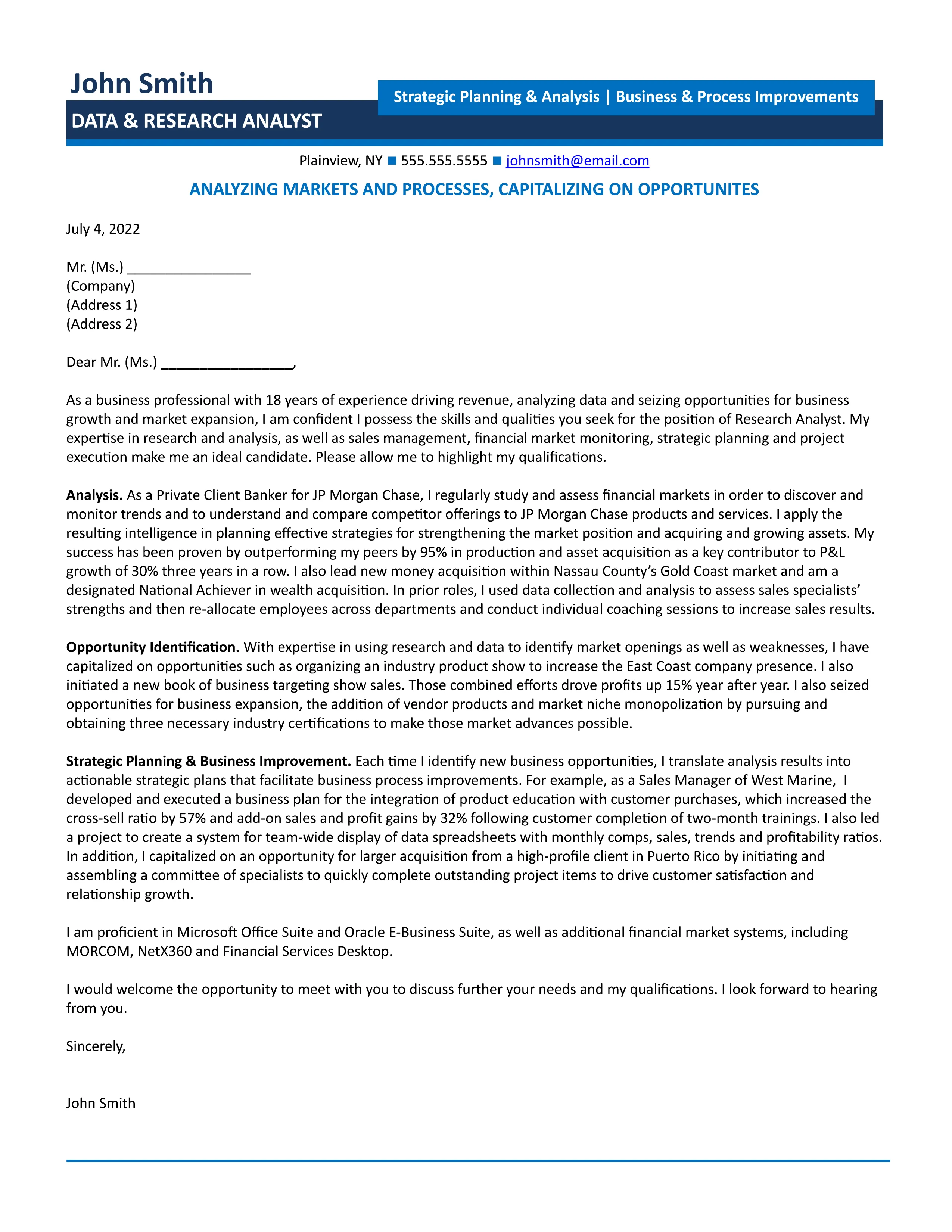Understanding the Importance of a Research Analyst Cover Letter
A well-crafted cover letter is a crucial tool in your job search arsenal, especially when applying for a Research Analyst position. Unlike a resume, which provides a factual overview of your skills and experience, a cover letter offers you the opportunity to showcase your personality, express your genuine interest in the role and the company, and highlight the specific reasons why you are the ideal candidate. It bridges the gap between your qualifications and the requirements of the job, helping hiring managers understand the value you bring. It also demonstrates your communication skills and attention to detail – vital qualities for any research analyst. Therefore, investing time in creating a compelling cover letter can significantly increase your chances of getting noticed and securing an interview.
Key Components of a Strong Cover Letter
A successful cover letter is more than just a formality; it’s a strategic document designed to capture the hiring manager’s attention and convince them to read your resume. It needs to be concise, compelling, and tailored to each specific job application. A generic cover letter simply won’t cut it. You must carefully customize your letter to align with the specific requirements of the position and the values of the company. By addressing the key components of a cover letter, you can create a narrative that highlights your qualifications, skills, and experiences, making you stand out from the competition. This will include a clear header, a professional greeting, a well-structured body, and a confident closing.
Header Information
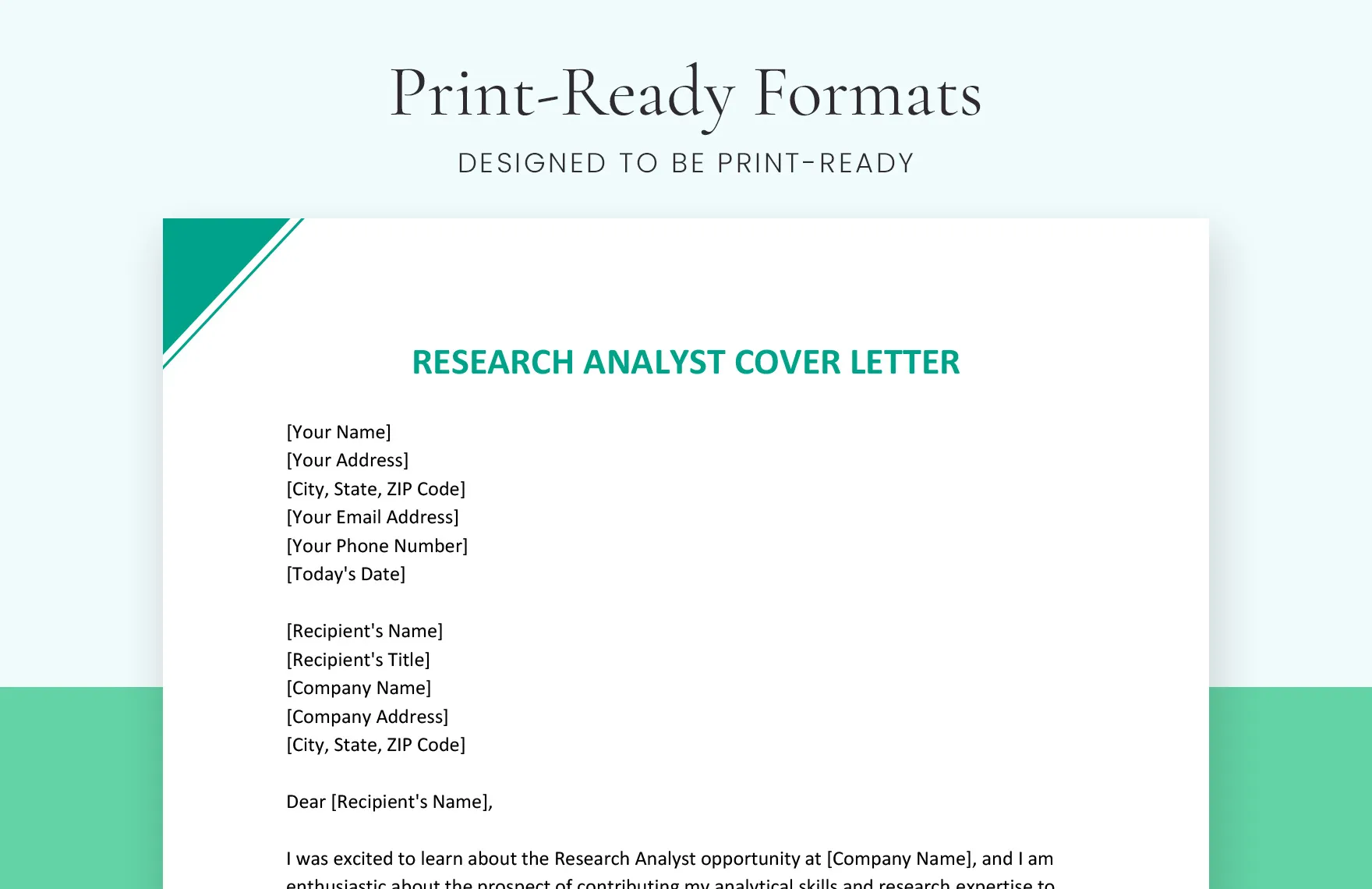
The header of your cover letter provides essential contact information and sets the tone for the entire document. Accuracy and professionalism are paramount here. Ensure that all information is up-to-date and easy to read, making it simple for the hiring manager to contact you. Include your full name, address, phone number, and professional email address. This immediately lets the hiring manager know how to reach you. It also makes the cover letter look professional and organized, reflecting your attention to detail which is extremely important for a research analyst role. Always double-check for any errors before submitting.
Your Contact Information
Begin your header by clearly stating your name, followed by your complete mailing address, phone number, and professional email address. Use a standard font like Arial or Times New Roman, and ensure that the font size is readable. Your email address should be professional; avoid using nicknames or casual addresses. It’s best to use an email address that includes your name. This ensures that the hiring manager has all the information they need to contact you for an interview. Maintain consistency between the header of your cover letter and the contact information on your resume. This ensures clarity and professionalism.
Employer’s Contact Information
Following your contact information, include the employer’s contact details. If a specific hiring manager is named in the job posting, address the letter to that person. If not, you can address it to the hiring manager or the relevant department. Including this information personalizes the letter and shows that you’ve taken the time to research the company. Be sure to include the company’s name, the hiring manager’s name (if known), their title, and the company’s address. This formatting also helps the cover letter look professional. If you are unable to find the hiring manager’s name, you can address the letter to ‘Hiring Manager’.
Professional Greeting
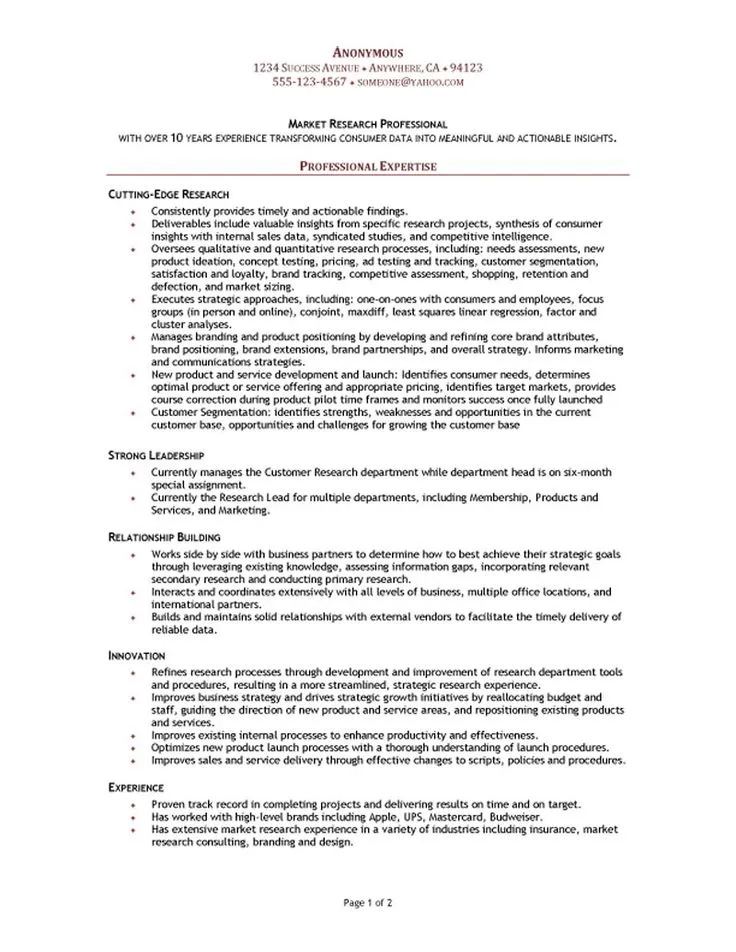
The greeting sets the initial tone of your cover letter. Start with a formal greeting such as ‘Dear Mr./Ms./Mx. [Last Name]’ if you know the hiring manager’s name. If you don’t know the name, use a general greeting like ‘Dear Hiring Manager’ or ‘Dear [Department Name] Team.’ Avoid generic greetings such as ‘To Whom It May Concern,’ which may come across as impersonal. Researching the hiring manager’s name demonstrates initiative and attention to detail, which are important qualities in a research analyst. The greeting should be followed by a colon. This is a small but significant detail that adds to the overall professionalism of your letter. An appropriate greeting can make a positive first impression and entice the reader to continue reading.
Body Paragraph 1 Introduction and Purpose
The first paragraph serves as your introduction. Clearly state the position you are applying for and where you found the job posting. Immediately express your interest in the role and the company. Briefly mention your key qualifications and why you are a good fit for the position. Clearly articulate your purpose for writing. This is where you set the stage for the rest of your cover letter and capture the reader’s attention. The goal here is to make an immediate connection with the reader and create an impression of confidence and enthusiasm, emphasizing why you are interested in both the job and the company. Tailor your introduction to the specific role and company to show that you understand their needs and expectations.
Body Paragraph 2 Highlighting Relevant Skills
In the second paragraph, focus on demonstrating your relevant skills and how they align with the requirements of the research analyst position. Research analyst positions demand a specific set of skills. These include critical thinking, analytical abilities, data interpretation, and strong communication skills. This is where you elaborate on your capabilities and provide specific examples from your previous experiences. Show how your skills translate into tangible results by providing context around your work. Quantify your accomplishments whenever possible. Highlighting these skills will show the hiring manager that you are prepared to meet the challenges of the role and contribute effectively to the organization.
Research and Analytical Skills
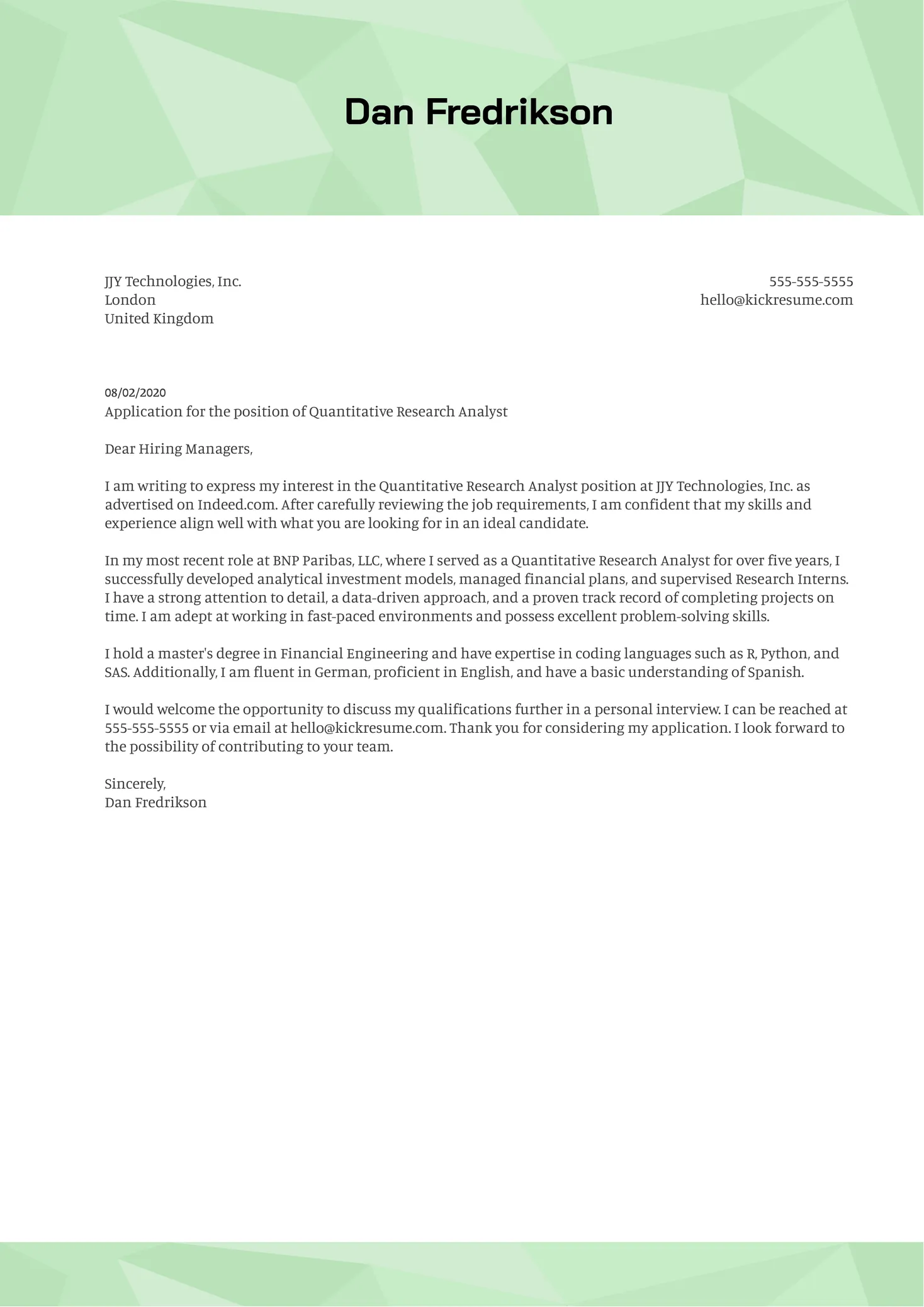
Research analysts require exceptional research and analytical skills. Emphasize your ability to conduct thorough research using various methodologies, gather data from diverse sources, and analyze it effectively. Describe your experience in data collection, data mining, and utilizing databases to extract and analyze information. Showcase your ability to identify trends, patterns, and anomalies within the data. Mention any relevant software or tools you have used to conduct research, such as statistical analysis software, data visualization tools, or research databases. These skills are at the core of the research analyst’s role and will be highly valued by the hiring manager, showing that you have the capacity to handle the analytical responsibilities of the job.
Data Analysis and Interpretation
Data analysis and interpretation are central to the role of a research analyst. Describe your experience in analyzing complex datasets, drawing meaningful conclusions, and presenting your findings in a clear and concise manner. Explain how you utilize statistical methods, data visualization tools, and analytical techniques to derive insights from data. Provide examples of how you’ve used data to solve problems, make recommendations, or drive business decisions. Detail any specific data analysis techniques you are proficient in, such as regression analysis, time series analysis, or qualitative data analysis. Showcase your ability to translate data into actionable insights. This will make you stand out as a candidate who can effectively contribute to the company’s research objectives.
Attention to Detail and Accuracy
Attention to detail and a commitment to accuracy are paramount for research analysts. Highlight your ability to meticulously review data, identify errors, and ensure the integrity of your findings. Describe your approach to data validation and quality control. Provide examples of how you’ve ensured accuracy in your past projects. Mention any certifications or training you’ve completed related to data quality or validation. These qualities will make you a trustworthy and reliable candidate, able to contribute high-quality research to the organization. Make sure you show examples of situations where your attention to detail proved crucial for a project.
Body Paragraph 3 Showcasing Achievements
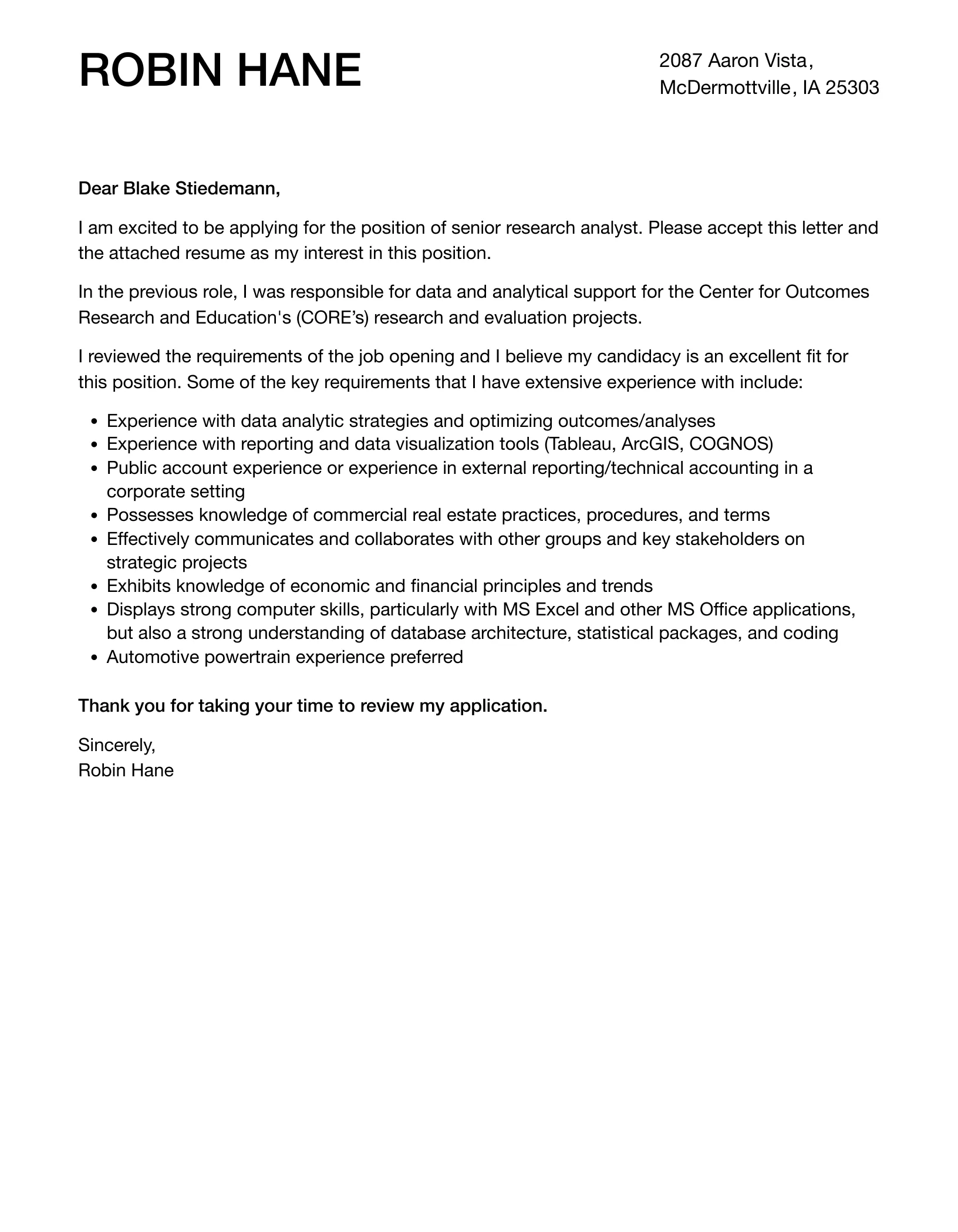
The third paragraph should showcase your achievements and quantifiable results. Instead of simply listing your responsibilities, provide specific examples of your accomplishments and the impact you made in previous roles. Demonstrate how your skills translated into tangible results. This is where you move beyond stating what you did and show the hiring manager what you achieved. Quantify your accomplishments whenever possible to illustrate the value you brought to your previous employers. This section should demonstrate the value you will bring to the company. Providing concrete evidence of your past success is a powerful way to convince the hiring manager that you are a high-performing candidate.
Quantifiable Results
Use numbers to demonstrate the impact of your work. Instead of saying ‘Improved research efficiency,’ quantify it by saying ‘Increased research efficiency by 20%’. Provide specific metrics, such as the percentage of errors reduced, the number of reports completed, the amount of money saved, or the number of projects successfully completed. These figures provide concrete evidence of your capabilities and make a stronger impression on the hiring manager. They also make it easier for the hiring manager to assess the value you can bring to their organization. By using quantifiable results, you will clearly show the hiring manager that you can contribute significantly to their team.
Project Examples
Provide specific examples of projects where you made a significant contribution. Describe the project, your role, the challenges you faced, and the results you achieved. Highlight your ability to work independently and as part of a team. Focus on any projects that are directly relevant to the requirements of the research analyst position. If possible, mention any specific software or tools you used. These examples give the hiring manager a clear picture of your capabilities and show how you apply your skills in real-world scenarios. Choose examples that demonstrate a range of skills, such as analytical abilities, problem-solving skills, and communication skills. Include concise descriptions of the project goals and the outcome. These projects will provide insights into your experience.
Body Paragraph 4 Expressing Enthusiasm
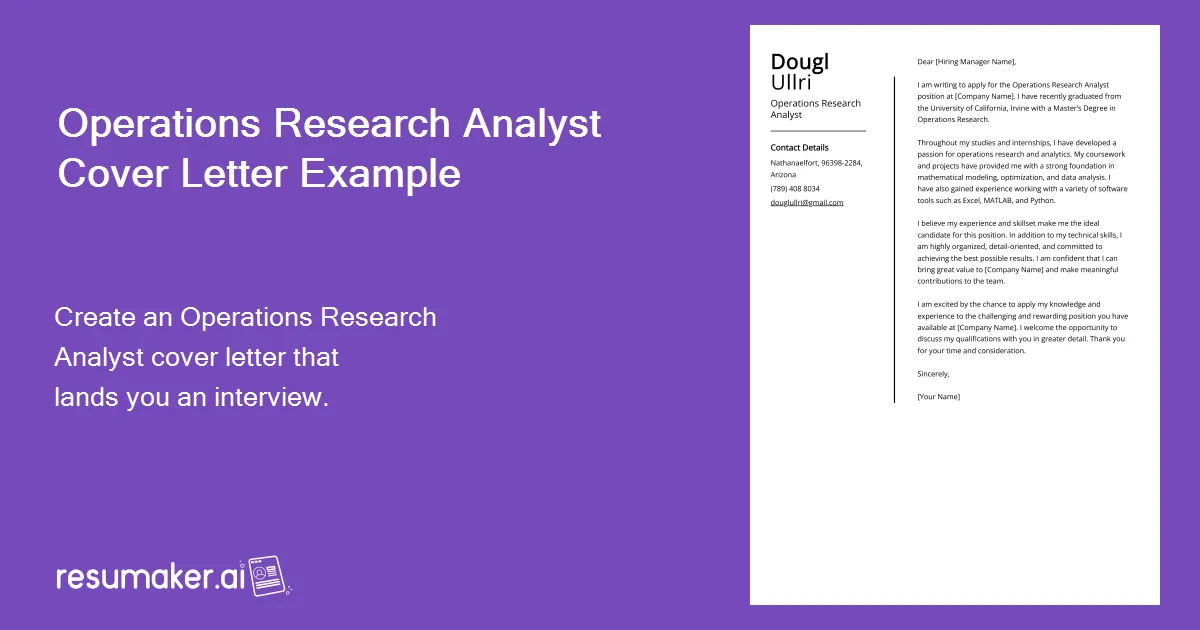
In the final body paragraph, express your enthusiasm for the role and the company. Explain what attracts you to the specific position and the organization. Briefly mention any research you’ve done about the company and how your values align with their mission. Show your understanding of the company’s objectives and explain how you can contribute to their success. Highlight the value that you can bring to their team. Demonstrate your genuine interest and passion for the opportunity and explain why you are the ideal candidate. Showing enthusiasm is crucial for making a positive impression. It tells the hiring manager that you are genuinely interested in the position and are eager to contribute to the team and company. This is your opportunity to show your personality and passion for the role.
Closing the Cover Letter
The closing of your cover letter provides a final opportunity to leave a positive impression. It should be professional, polite, and include a call to action. The goal is to reiterate your interest in the position and encourage the hiring manager to take the next step. A well-crafted closing reinforces your message and reinforces your professional image. A strong closing can significantly increase your chances of being invited for an interview. It should include a formal closing, a call to action, and a mention of your availability for an interview.
Formal Closing
Use a professional and appropriate closing such as ‘Sincerely,’ ‘Best regards,’ or ‘Yours sincerely.’ Ensure that the closing is consistent with the tone and style of your cover letter. Avoid overly casual or informal closings. After the closing, leave space for your signature, and then type your full name. Your signature should be above your typed name if you are submitting a hard copy. This section should be clear and concise, reinforcing your professionalism and attention to detail. This confirms that you have completed the letter. It should match the formal tone that you have established throughout the letter.
Call to Action
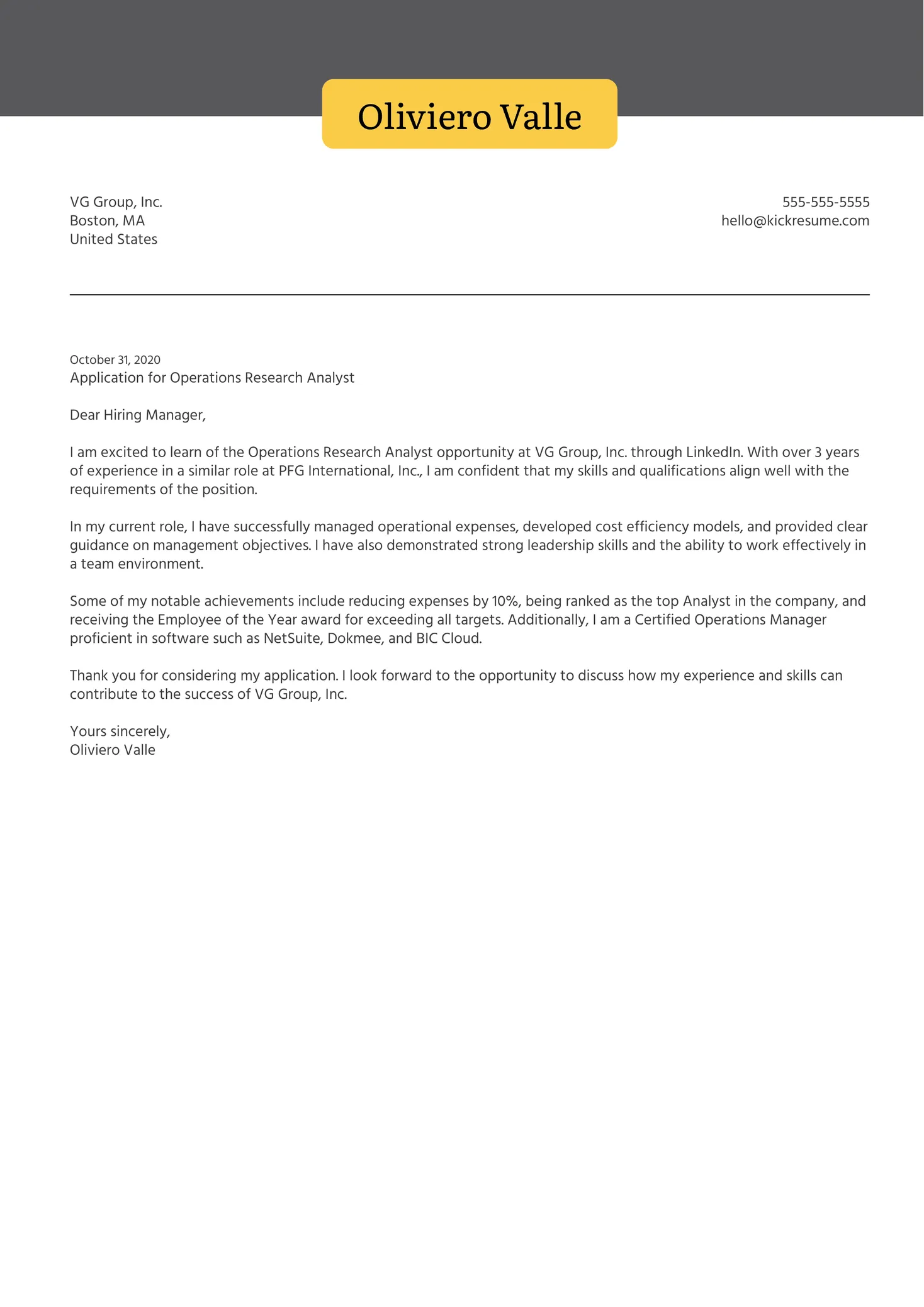
Include a clear call to action. Express your eagerness for an interview and state how you can be reached. Thank the hiring manager for their time and consideration. You might write, ‘I am eager to discuss my qualifications further and would welcome the opportunity for an interview.’ Providing your contact information again ensures that the hiring manager has easy access to your details. This final statement leaves the hiring manager with a clear idea of what you expect next. This encourages the hiring manager to move forward with the hiring process and schedule an interview. This simple but crucial step can greatly increase your chances of getting a call back.
Proofreading and Editing
Proofreading and editing are essential steps in preparing your cover letter. Errors and typos can undermine your credibility and make a negative impression on the hiring manager. Before submitting your cover letter, carefully review it for any spelling, grammar, or punctuation errors. Ensure that the formatting is consistent and the language is clear and concise. Proofread your cover letter multiple times. Consider using grammar and spell-checking tools, but do not rely on them completely. Have a friend or family member review your cover letter. This ensures that there are no errors that you may have missed. A polished and error-free cover letter demonstrates your professionalism and attention to detail. This will reflect positively on you and increase your chances of success.
Formatting and Presentation
The formatting and presentation of your cover letter are just as important as the content. A well-formatted cover letter is easy to read and creates a positive first impression. Use a standard font like Arial or Times New Roman in a readable size, typically 11 or 12 points. Ensure that your cover letter has adequate margins and spacing. Use a professional layout and ensure that your cover letter is well-structured. Use bullet points to highlight your key achievements and skills. The document should be easy to navigate. Consider using a simple, clean design to enhance readability. A well-formatted cover letter reflects your attention to detail and commitment to professionalism. Always save the document as a PDF to preserve the formatting.
